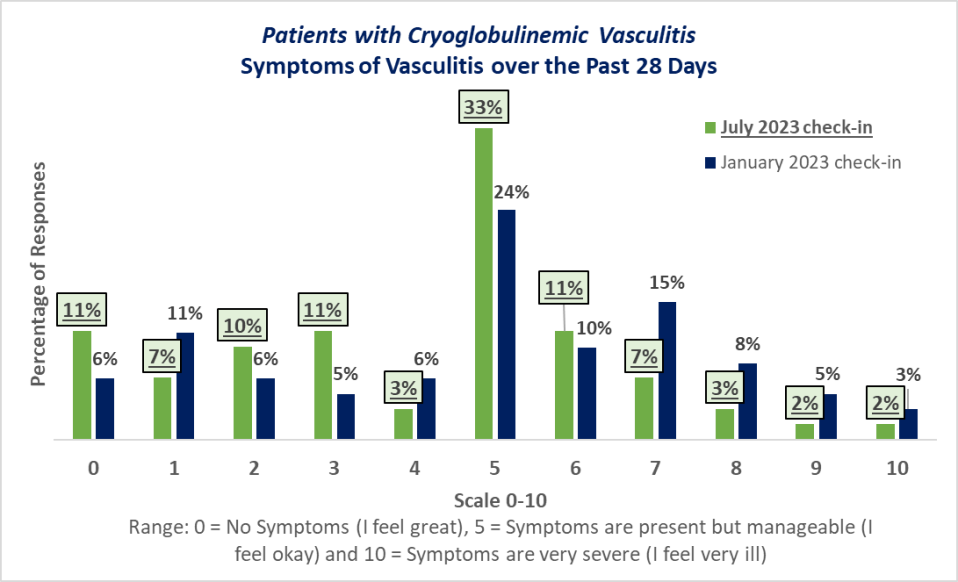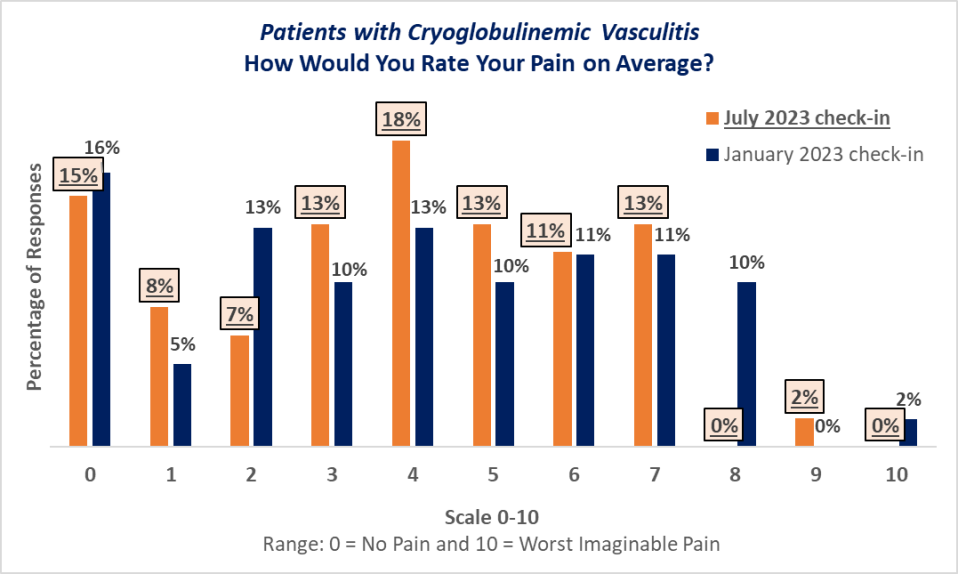VPPRN Patient-Powered Research
Cryoglobulinemic Vasculitis (Cryoglobulinemia)
Compared to patients with other forms of vasculitis at the July 2023 check-in, patients with cryoglobulinemic vasculitis (cryoglobulinemia) reported more flares, higher scores for fatigue, symptoms of vasculitis, and pain, and a higher percentage of patients reported active vasculitis.
If you have concerns about your health scores, please discuss with your rheumatologist or primary care provider.

FLARES and VASCULITIS
Flare Reporting: Patients with cryoglobulinemic vasculitis reported more flares in the past 6 months (35%) compared to 26% in the VPPRN community.
Patients with cryoglobulinemic vasculitis
Entire VPPRN Community
FATIGUE and VASCULITIS
Fatigue: 39% of patients with cryoglobulinemic vasculitis reported “quite a bit” of fatigue in the past 6 months, compared to 23% in the VPPRN community.
Patients with cryoglobulinemic vasculitis
Entire VPPRN Community
SYMPTOMS of VASCULITIS
Symptoms of Vasculitis: Patients with cryoglobulinemic vasculitis scored their symptoms of vasculitis higher over the past 28 days. 11% of patients with cryoglobulinemic vasculitis reported no symptoms of vasculitis compared to 22% in the VPPRN community.
Patients with cryoglobulinemic vasculitis
Entire VPPRN Community
PAIN and VASCULITIS
Pain: Patients with cryoglobulinemic vasculitis reported more pain in the past 6 months. 15% of patients with cryoglobulinemic vasculitis reported no pain. This is less than the 27% in the VPPRN community.
Patients with cryoglobulinemic vasculitis
Entire VPPRN Community
CURRENT STATE OF VASCULITIS
Current State of Vasculitis: 35% of patients with cryoglobulinemic vasculitis reported their vasculitis as active. This is higher than the 24% reported in the Network.










